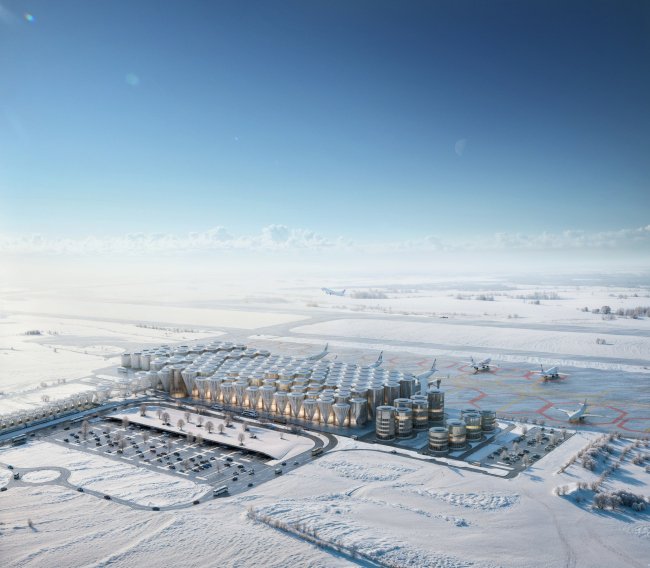|
Published on Archi.ru (https://archi.ru) |
|
| 24.04.2024 | |
|
Inverted Fortress |
|
|
Julia Tarabarina |
|
| Studio: | |
| KPLN | |
|
This year, there has been no shortage of intriguing architectural ideas around the Omsk airport. The project developed by the architectural company KPLN appeals to Omsk’s history as a wooden fortress that it was back in the day, but transforms the concept of a fortress beyond recognition: it “shaves off” the conical ends of “wooden logs”, then enlarges them, and then flips them over. The result is a hypostyle – a forest of conical columns on point supports, with skylights on top. Not long ago, in March, intermediate results of the competition for the new Omsk-Fedorovka airport were announced, and then the winner was named – it was HVOYA. 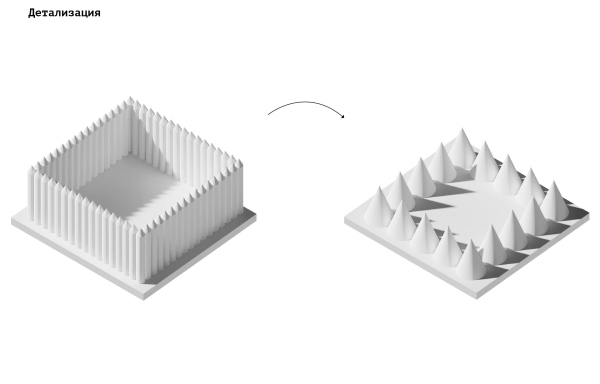 Omsk-Fedorovka Airport. Guardian of the southern bordersCopyright: © KPLN Omsk-Fedorovka Airport. Guardian of the southern bordersCopyright: © KPLN The search for form. Omsk-Fedorovka Airport. Guardian of the southern bordersCopyright: © KPLN Omsk-Fedorovka Airport. Guardian of the southern bordersCopyright: © KPLNThe gigantic inverted cones are as tall as the terminal itself, and honestly, at first glance, you wouldn’t guess that they are the sharpened ends of some imaginary fortress logs. That is, Shklovsky’s “defamiliarization” phenomenon indeed occurred. The cones are composed of steel supports, fan-like and diverging from a common support point at the bottom to a ring at the top. Inside the ring is a skylight, and along the surface of the cone are thin steel cables that camouflage the main supports and accentuate the stereometric surface. The structure is transparent, and natural light from the skylights could illuminate the entire space, while in the evening, conversely, the conical volumes would glow from within. 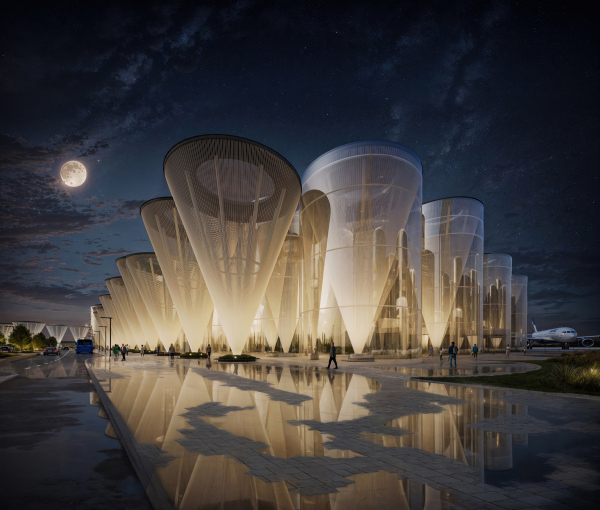 Omsk-Fedorovka Airport. Guardian of the southern borders. View of the terminal as seen from the plazaCopyright: © KPLN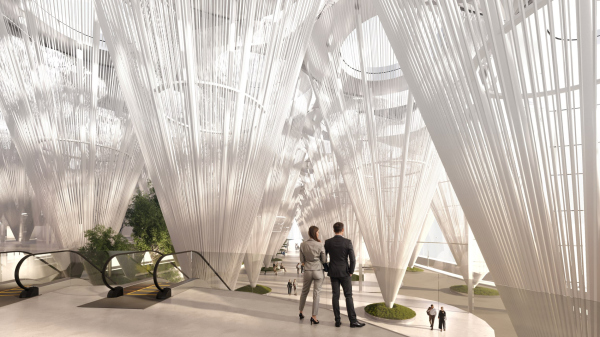 Omsk-Fedorovka Airport. Guardian of the southern borders. The main hall of the airportCopyright: © KPLNOmsk-Fedorovka Airport. Guardian of the southern borders. View of the building as seen from the railway platformCopyright: © KPLNOmsk-Fedorovka Airport. Guardian of the southern borders. An overview from the drivewayCopyright: © KPLNThese luminous “vessels” standing on one point, looking like glasses or giant “office buttons”, are a stunning sight to see. They certainly set the module pitch, and the building construction becomes somewhat atypical for an airport, where typically a decorated hangar forms the basis. Here, the entire plan is subordinated to circles, which, however, is no less rational. The architects even devised a logo for the project – made up of circles. 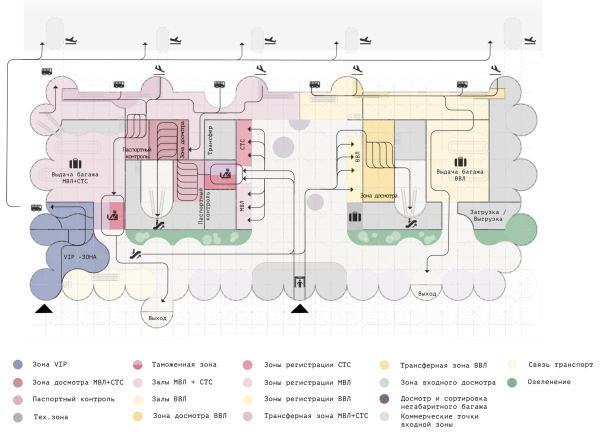 Omsk-Fedorovka Airport. Guardian of the southern bordersCopyright: © KPLN The passenger flow of the 2nd floor. Omsk-Fedorovka Airport. Guardian of the southern bordersCopyright: © KPLNInside, benches or green hillocks of buffer zones were planned around the supports. The architects also proposed a winter garden with live trees and geoplastics inside the interior. Different light messages could be projected onto the surface of the cones. 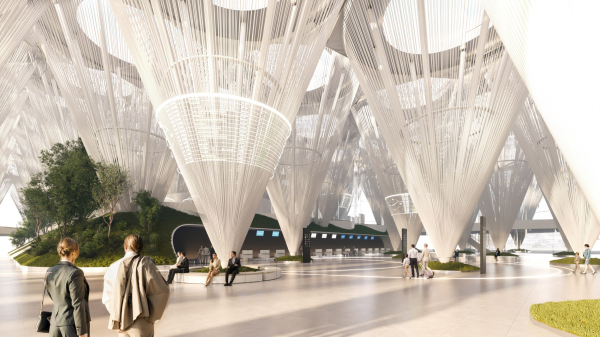 Omsk-Fedorovka Airport. Guardian of the southern borders. The registration areaCopyright: © KPLN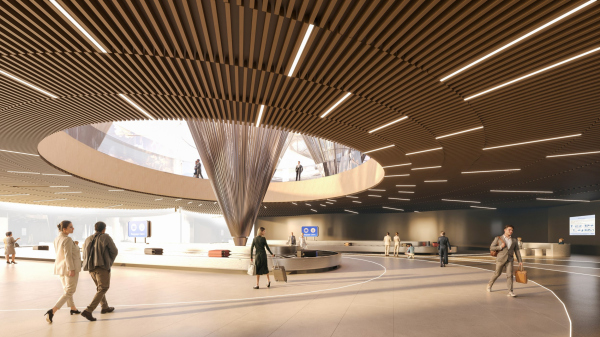 Omsk-Fedorovka Airport. Guardian of the southern borders. The luggage claim hallCopyright: © KPLNThe cones penetrate even in the two-tiered parts of the space, along with natural light and spatial scenography. This was supposed to create a strong sensation akin to a hypostyle hall filled with columns. The difference is that the classic historical hypostyle is usually dark, which also captivates the imagination, while this one is bright and is entirely strung on the floating strings. It would likely be an intriguing impression. 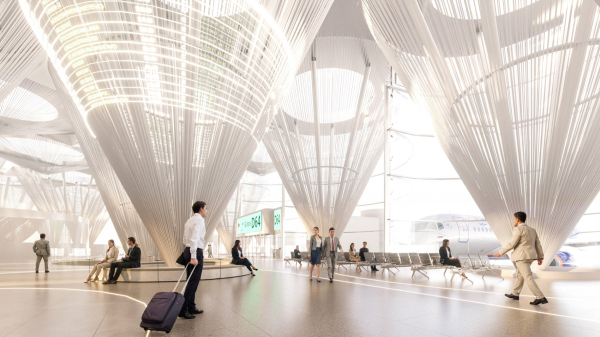 Omsk-Fedorovka Airport. Guardian of the southern borders. View of the arrival/departure hallCopyright: © KPLN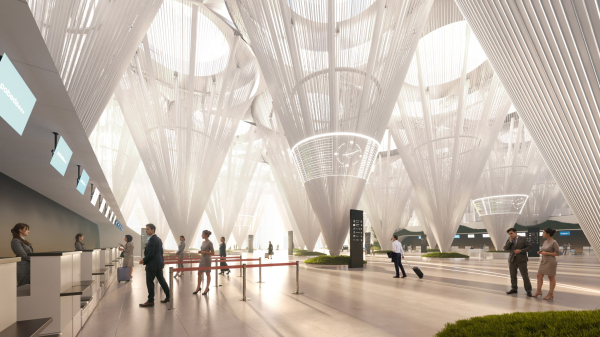 Omsk-Fedorovka Airport. Guardian of the southern borders. The registration areaCopyright: © KPLNOf course, this approach somewhat disrupts the usual notion that the more open the terminal hall, the better. But then again, on the other hand, the supports are point-like, the cones of the columns are high enough, and the emotional effect of the interior is entirely unexpected, although some resemblance to airports with their mushroom-shaped columns may be felt here. Cones are not the only modules for constructing volume and space here. In unison with them, albeit in the background where things by default must be less exposed, metal and glass cylinders are used for technical rooms and some other facilities. Their pitch is different but they are subject to the same module. From a birds-eye view, the airport would look astonishing: like an imposing conglomerate of buttons, or perhaps nails, submerged to varying depths, or perhaps like some kind of giant keyboard.  Omsk-Fedorovka Airport. Guardian of the southern borders. General view from above from the apronCopyright: © KPLN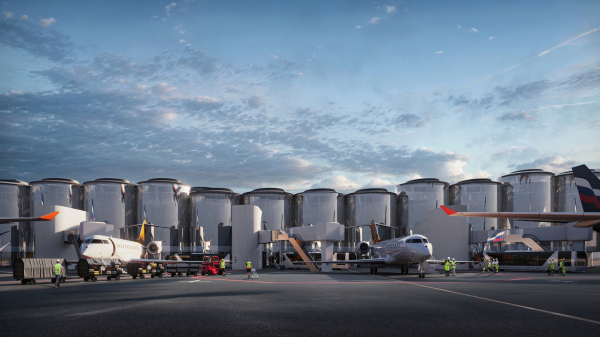 Omsk-Fedorovka Airport. Guardian of the southern borders. SView of the building from the airfieldCopyright: © KPLNOmsk-Fedorovka Airport. Guardian of the southern borders. General view from the top from the side of the plazaCopyright: © KPLNThe string of small cones covering the railway station is also intriguing. They are like mushrooms, larger at the main spot, and smaller on the periphery. Cones and cylinders, all these “buttons” are the main sculptural gesture, but not the only architectural solution of the project. In particular, the architects propose a two-story terminal for saving space and streamlining passenger flows. The plaza in front of the airport is made two-tiered: there is both parking and a landscaped area closer to the entrance to the airport. But its main feature is the “gaping holes”. The exits from the underground level, equipped with arc-shaped steps, look almost like natural caves. From them, there is an impressive view of the terminal cones, energetically belligerent. It looks like a true guardian of the country’s southern borders. Omsk-Fedorovka Airport. Guardian of the southern bordersCopyright: © KPLNThe underground square in front of the entrance was also planned to be illuminated with round skylights, which, besides their practical function, also carried a conceptual load, resembling small buttons scattered outside the contour of the main lines and spots. 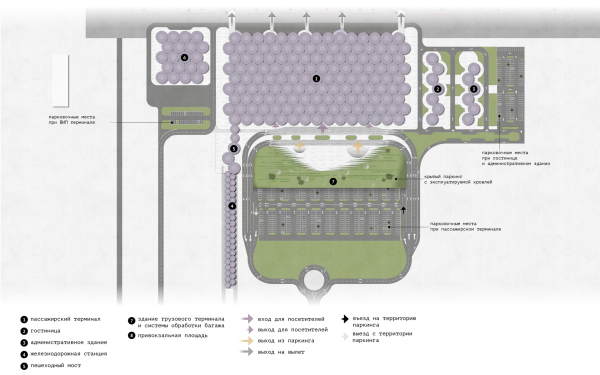 Omsk-Fedorovka Airport. Guardian of the southern borders. The location plan of the airportCopyright: © KPLN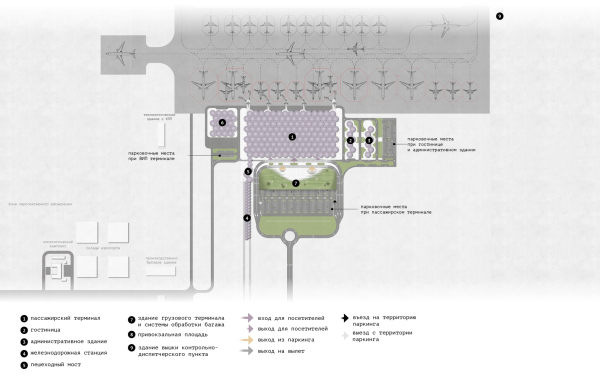 Omsk-Fedorovka Airport. Guardian of the southern borders. The master planCopyright: © KPLN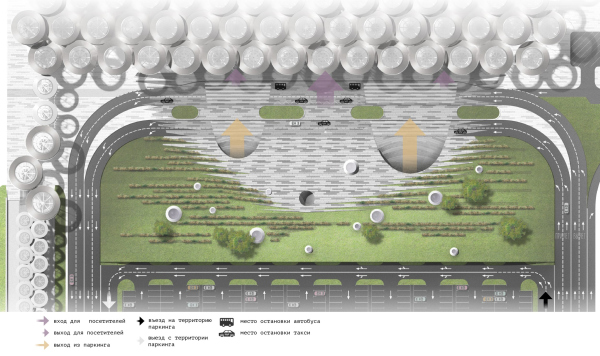 Omsk-Fedorovka Airport. Guardian of the southern borders. The front plazaCopyright: © KPLN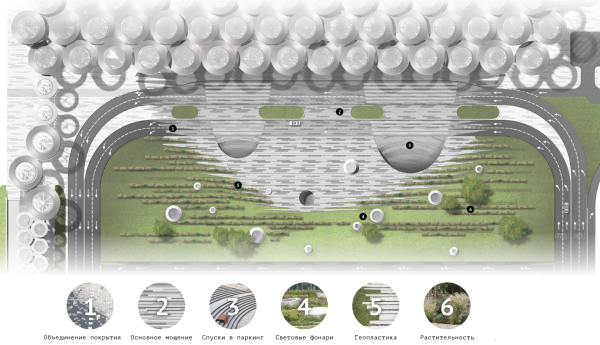 Omsk-Fedorovka Airport. Guardian of the southern borders. The territory improvementCopyright: © KPLN Omsk-Fedorovka Airport. Guardian of the southern borders. Section 2-2Copyright: © KPLN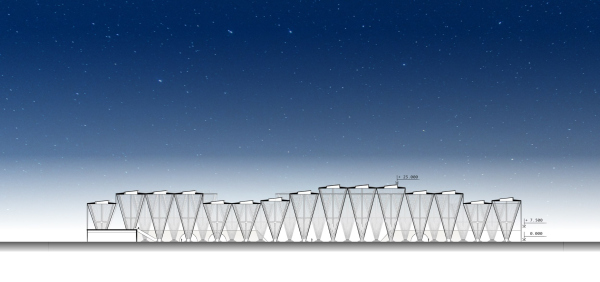 Omsk-Fedorovka Airport. Guardian of the southern borders. Section 1-1Copyright: © KPLNBunch columns with support at one point are a common technique in modern architecture, but in this case, an explanation for the form has been found, and precisely the way it should be: historical, rooted in context, but completely unrecognizable literally. In other words, if the project were implemented – and we are reminding you at this point that it did not win the competition – if it were implemented, one can imagine the surprise of a tourist or a city guest, being told that these cones made of steel cables serve as a reminder of the old wooden turrets of the fortress walls. Well, maybe they would have believed it, but not right away. |
|


